Introduction
Imagine waking up early on a fresh spring morning, stepping outside, and being greeted by the vibrant greens and budding blooms of your own vegetable garden. Home gardening is not only an enriching hobby but a rewarding path to sustainability, health, and potentially saving on your grocery bill. In this comprehensive guide, we explore the best vegetables to grow in spring and summer, ensuring a bountiful harvest and a flourishing garden.
This exploration of home gardening will take you through the key benefits of growing your own vegetables, the best crops to plant in the spring and summer seasons, and expert tips to ensure success. For those looking to transform their backyards into lush culinary sanctuaries, Plantology offers an ideal starting point for sourcing high-quality plants and trees.
The Benefits of Home Gardening
Physical and Mental Health Benefits
Physical Activity and Exercise
Gardening is an excellent form of physical exercise. It involves bending, digging, lifting, and walking, activities that contribute to your daily physical activity requirements. Regularly engaging with your vegetable garden can improve your cardiovascular health, enhance flexibility and strength, and improve your overall physical fitness.
Stress Reduction and Mental Well-Being
The therapeutic effects of gardening on mental health are well-documented. Tending to plants and nurturing them from seeds to full-grown produce can bring immense satisfaction and a sense of accomplishment. The serene and repetitive nature of gardening tasks can help reduce stress and promote mental clarity. Taking time away from screens and stepping into nature bring about a peaceful, meditative experience that boosts your mood and reduces anxiety.
Environmental Impact
Growing your own vegetables not only benefits your health but also the environment. By cultivating a home garden, you contribute to the local reduction of carbon footprint through minimized reliance on commercially farmed produce, which often travels long distances to reach your table. Additionally, adopting organic practices in your home garden supports biodiversity and soil health while reducing the need for chemical fertilizers and pesticides.

Best Vegetables to Grow in Spring
Leafy Greens
Spinach
Spinach is a versatile and nutrient-rich leafy green that thrives in the cool spring weather. It germinates quickly and can endure slight frosts, making it one of the first crops to plant in early spring. Spinach can be harvested multiple times over several weeks, providing a continuous supply throughout the season.
Lettuce
Lettuce varieties, including romaine, butterhead, and loose-leaf, make excellent spring crops. These easy-to-grow greens prefer cooler temperatures and will produce a quick and bountiful yield. Consider planting a mix of varieties to enjoy diverse textures and flavors in your salads.
Root Vegetables
Radishes
Radishes are among the fastest-growing vegetables, maturing in as little as 3-4 weeks. They are a spring favorite with their crunchy texture and peppery flavor. Sow seeds directly in the soil and watch your radishes transform your meals into colorful and fresh experiences.
Carrots
Carrots also favor the cooler temperatures of spring. Carrot seeds can be sown as soon as the soil is workable, typically about 2-3 weeks before the last frost. They come in a variety of colors beyond the traditional orange, each offering unique tastes and health benefits.
Peas
Both sugar snap peas and snow peas are delightful spring crops. They prefer cool temperatures and are often ready to harvest within a couple of months. Peas can be eaten fresh or cooked and are a marvellous addition to any garden due to their climbing abilities, which add vertical interest to your plot.

Best Vegetables to Grow in Summer
Nightshades
Tomatoes
Tomatoes are the quintessential summer vegetable, basking in the sunlight to grow juicy and flavorful. They require full sun, warm soil, and regular watering. With numerous varieties available, from beefsteak to cherry, selecting the right type for your garden depends on personal taste and space availability.
Peppers
Whether you prefer sweet bell peppers or fiery hot chili peppers, these colorful fruits of summer are a delightful addition to your garden. Like tomatoes, they thrive in warm temperatures, requiring full sun and consistently moist soil. Peppers offer a rainbow of culinary possibilities, adding flavor and nutrition to meals.
Gourds and Squashes
Zucchini
Zucchini plants are prolific producers, yielding abundant harvests that seem to multiply overnight. They require a lot of space and sunshine, so ensure your garden has room for their sprawling nature. Zucchini is exceedingly versatile in the kitchen, perfect for grilling, baking, or sautéing.
Cucumbers
Growing cucumbers in summer allows you to enjoy crispy, refreshing snacks straight from the vine. Cucumbers are vining plants and can benefit from trellising to maximize garden space. With proper care, cucumbers offer continuous production through the summer months.
Corn
Sweet corn is a classic choice for the summer garden. It requires ample sunlight and space but rewards with deliciously sweet and tender kernels perfect for roasting or boiling. Stagger plantings each week to extend the harvest over a longer period during the warmest months.

Pro Tips for a Successful Gardening Experience
Understanding Your Climate and Soil
Before planting, consider your local climate and the specific needs of each vegetable. Soil preparation is crucial, as vegetables thrive in well-draining, nutrient-rich soil. Conduct a soil test to understand its composition, and amend as necessary with compost or organic material.
Proper Watering Techniques
Both over-watering and under-watering can harm your plants. Ensure your garden is adequately irrigated, especially during the hot summer months. Early morning is the best time for watering, as it allows moisture to penetrate roots without evaporating in the midday sun.
Pest Management
Implementing organic pest control practices preserves your crops and supports garden ecology. Introduce beneficial insects like ladybugs or utilize companion planting strategies to deter unwanted pests naturally. Keeping your garden free from debris and rotating crops can also help prevent pest infestations.
Mulching and Fertilizing
Mulching helps conserve soil moisture, suppress weeds, and enrich the soil over time. Organic mulches, such as straw or wood chips, break down and improve soil structure. For optimal growth, fertilize your plants according to their needs, ensuring they have the essential nutrients for robust development.
Explore Plantology for Your Gardening Needs
If you’re eager to begin your home gardening journey, visit Plantology, your one-stop shop for high-quality plants and trees. Whether you're a novice or experienced gardener, Plantology offers an extensive array of products tailored to help your garden thrive.
Explore offerings like the spectacular Adonidia Palm and enhance your garden with premium selections designed to flourish in your local climate. With top-grade plants and expert guidance, Plantology empowers you to cultivate a flourishing garden.

Conclusion
Embarking on a journey of growing your own vegetables in the spring and summer brings both personal and environmental rewards. With diverse options such as leafy greens in spring and delectable tomatoes, zucchinis, and peppers in summer, your garden can transform into a vibrant, seasonal pantry. Through informed planting strategies and expert care, your garden will not only yield delicious produce but also foster a deeper connection to nature and an improved quality of life.
Ready to dig in and get your hands dirty? Visit Plantology today to find your next garden centerpiece and plant the seeds for a healthier, more sustainable lifestyle.
Expanding Your Knowledge: Advanced Gardening Techniques
Once you've grown comfortable with the basics, taking your gardening to the next level can be incredibly rewarding. There are numerous advanced techniques avid gardeners can employ to enhance productivity, boost aesthetic appeal, and even extend the growing season. Here are some detailed strategies and examples to elevate your gardening expertise.
Companion Planting
Companion planting is an age-old practice involving the strategic placement of plants that benefit one another. This symbiosis can lead to improved growth, enhanced flavor, and natural pest deterrence. Let’s delve into specific examples and combinations to try in your garden:
- Tomatoes and Basil: Basil can enhance the flavor of tomatoes and repel insects that might otherwise plague your tomato plants. Growing them together is mutually beneficial.
- Carrots and Onions: The pungent aroma of onions can keep carrot flies at bay. This pairing can lead to stronger growth for both plants.
- Corn, Beans, and Squash (The Three Sisters): This traditional Native American combination maximizes space and nutrient sharing. Corn offers a natural trellis for beans, beans add nitrogen to the soil, and squash provides ground cover to retain moisture.
Season Extending Techniques
For gardeners eager to maximize their harvests, employing season-extending techniques can make a significant difference. Here are some strategies to try:
- Cold Frames: These simple, unheated glasshouses provide a controlled environment to start seeds earlier in the spring or extend the growing period into the fall.
- Row Covers and Cloches: Lightweight coverings protect plants from early frost and pests, maintaining a stable temperature for seedling development.
- High Tunnels and Hoop Houses: More substantial structures than cold frames, these provide a microclimate, extending your growing season by several months.
Implementing these methods can lead to an increased harvest and the ability to grow a broader array of crops.
Soil Health and Crop Rotation
Maintaining healthy soil is essential for a thriving garden. Implementing crop rotation is a smart way to rejuvenate soil, prevent disease, and reduce pest cycles. Here's an in-depth look at how to rotate crops effectively:
- Divide Your Plot: Separate your garden into four sections, each assigned a different crop family: legumes, leaf vegetables, fruiting vegetables, and root crops. This division facilitates systematic rotation.
- Annual Rotation: Rotate each group to a different section the following year. For example, legumes improve nitrogen levels, assisting subsequent crops like leafy greens that require nutrient-rich soil.
- Benefits: Crop rotation disrupts the life cycles of pests and mitigates soil nutrient depletion, promoting a healthier and more productive yield.

Aquaponics and Hydroponics
For gardeners interested in a more high-tech approach, aquaponics and hydroponics provide innovative, soil-free gardening methods that can be pursued on small or large scales. Here's a brief overview:
- Hydroponics: This method uses water-based nutrient solutions to grow plants without soil. Plants are supported by inert mediums such as rockwool or clay pellets. Hydroponic systems optimize growth conditions leading to faster growth rates.
- Aquaponics: An integrated system combining aquaculture (raising fish) with hydroponics in a symbiotic environment. Fish waste provides an organic nutrient source for growing plants, while the plants help filter the water for the fish.
These methods offer multiple advantages, including space efficiency, reduced water usage, and the potential for year-round cultivation indoors or in greenhouses.
Succession Planting
To make the most of your growing season, consider succession planting. By staging plantings every few weeks, you can ensure a continuous yield throughout the season without overwhelming your kitchen with an excess of produce at one time.
- Quick-Maturing Crops: Radishes and lettuce are excellent choices for succession planting since they grow and are ready to harvest quickly, allowing for multiple planting cycles throughout a season.
- Staggered Planting Dates: Start with cold-tolerant varieties and follow up with those that thrive in warmer conditions for a balanced and continuous supply.
Exploring Edible Landscapes
For gardeners who value aesthetics as much as functionality, edible landscaping offers the perfect intersection. This approach integrates food-producing plants into the overall landscape design, providing beauty and sustenance in unison. Here are key tips for crafting an edible landscape:
Choosing Ornamental Edibles
Incorporating plants that fulfill both ornamental and edible purposes enhances the visual appeal of your garden:
- Herbs: Lavender, rosemary, and thyme offer attractive foliage and fragrant blooms while being indispensable in culinary pursuits.
- Fruit Trees and Bushes: Fig, apple trees, and blueberry bushes provide a seasonal bounty with their attractive forms and blossoms.
- Edible Flowers: Nasturtiums and violets not only add color but are edible, gracing salads and dishes with vibrant hues.
Design Considerations
Create an engaging edible landscape with these design elements:
- Integrated Planting: Blend vegetables and fruiting plants with traditional ornamentals to create a seamless appearance.
- Seasonal Interest: Choose plants that offer year-round beauty, with blooms in spring, lush foliage in summer, and colorful fruits or intriguing structures in fall and winter.
- Borders and Pathways: Use edible plants like low-growing herbs to line pathways, creating easy access and defining garden spaces.
Sustainable and Practical Design
Design with long-term sustainability and practical use in mind:
- Native and Drought-Tolerant Plants: Reduce water usage and maintenance while supporting local biodiversity by selecting plants suited to your area's climate.
- Functional Art: Incorporate elements like vertical gardens or trellises that add artistic value while serving a practical function.
Edible landscapes invite you to embrace creativity and functionality, blending aesthetics and production into your garden's fabric.

Building a Community through Gardening
Gardening holds immense potential for building connections and fostering community spirit. Whether through sharing seeds and produce, participating in community garden projects, or joining gardening clubs, these opportunities strengthen ties and foster mutual growth. Here are ways to engage with and support the gardening community:
Community Gardens
Community gardens offer shared space for individuals to grow plants, often catering to urban environments where private space is limited:
- Shared Resources: Community gardens offer shared tools, compost bins, and water facilities, reducing individual costs and supporting collaborative efforts.
- Educational Workshops: Many community gardens host workshops and classes, facilitating knowledge exchange and skill-building.
- Social Engagement: Participate in events, volunteer opportunities, and seasonal festivals to forge friendships and celebrate the shared bounty of gardening labor.
Seed Swaps and Sharing
Exchanging seeds with fellow gardeners fosters genetic diversity and enriches the gardening experience:
- Seed Libraries: These initiatives allow community members to borrow, save, and return seeds, facilitating biodiversity and access to rare varieties.
- Seed Swap Events: Join or organize events where gardeners exchange seeds, gain access to unique crops, and share cultivation tips.
Encouraging these community-based approaches creates a network of support, learning, and sustainable practices that extend beyond individual gardens.

Embracing Gardening as a Lifelong Passion
As we conclude this comprehensive guide to spring and summer gardening, it is evident that the joys of gardening are as much in the journey as in the harvest. Whether you're tending to pots on a windowsill or managing an expansive plot, the potential to grow in knowledge, nurture your well-being, and contribute to the environment is boundless. Here’s how to remain inspired in your gardening endeavors:

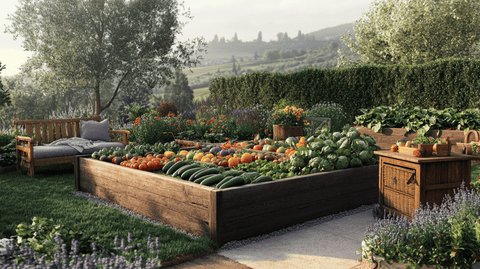


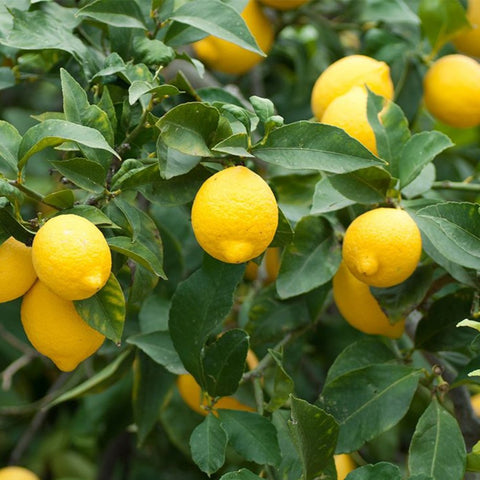

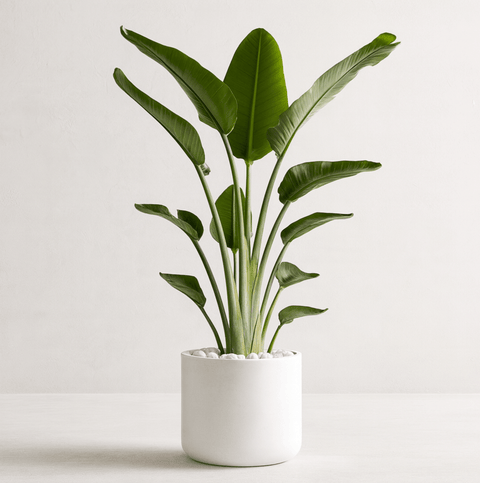










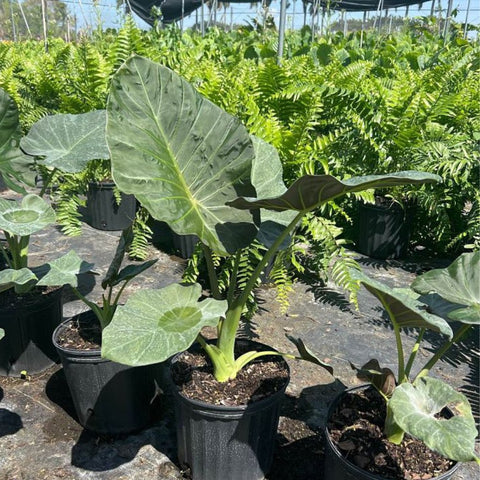







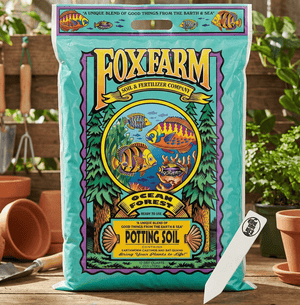




Comments (0)
There are no comments for this article. Be the first one to leave a message!